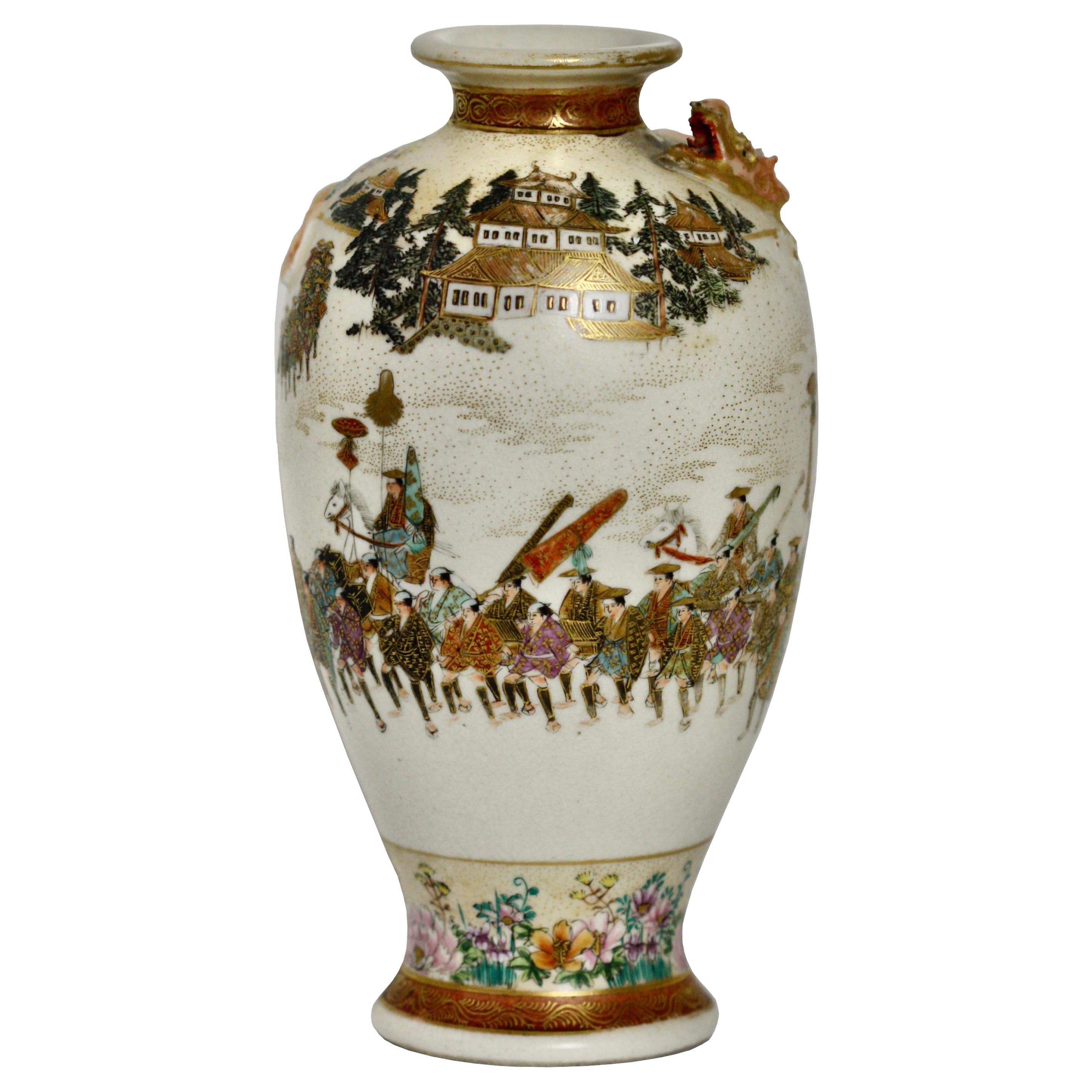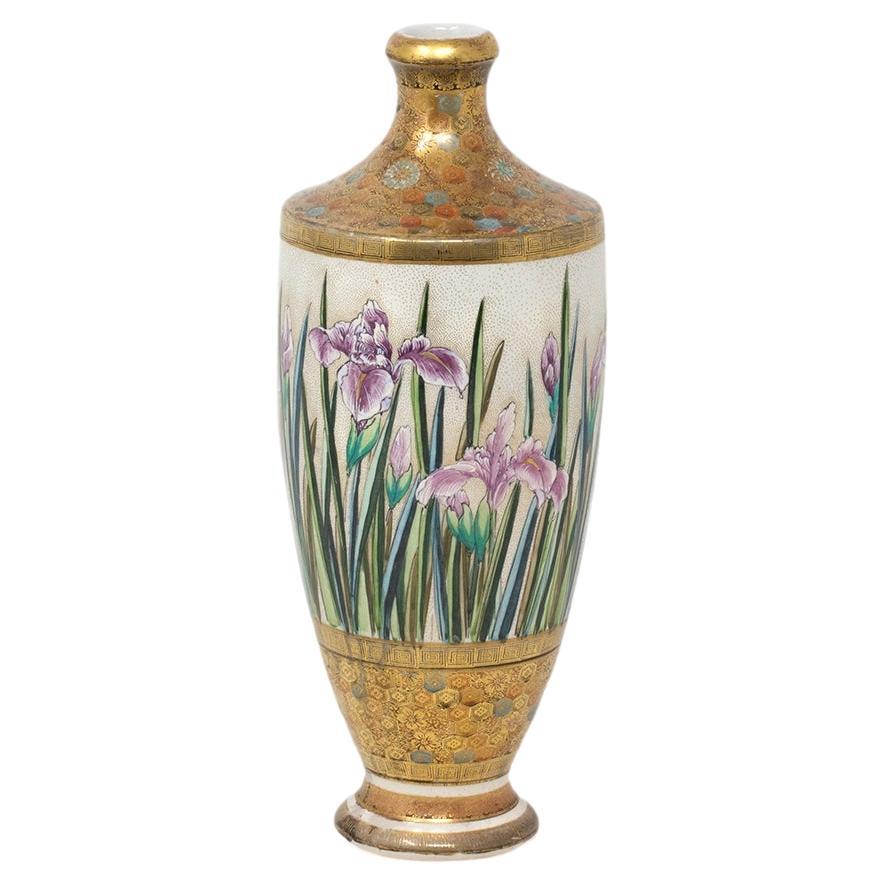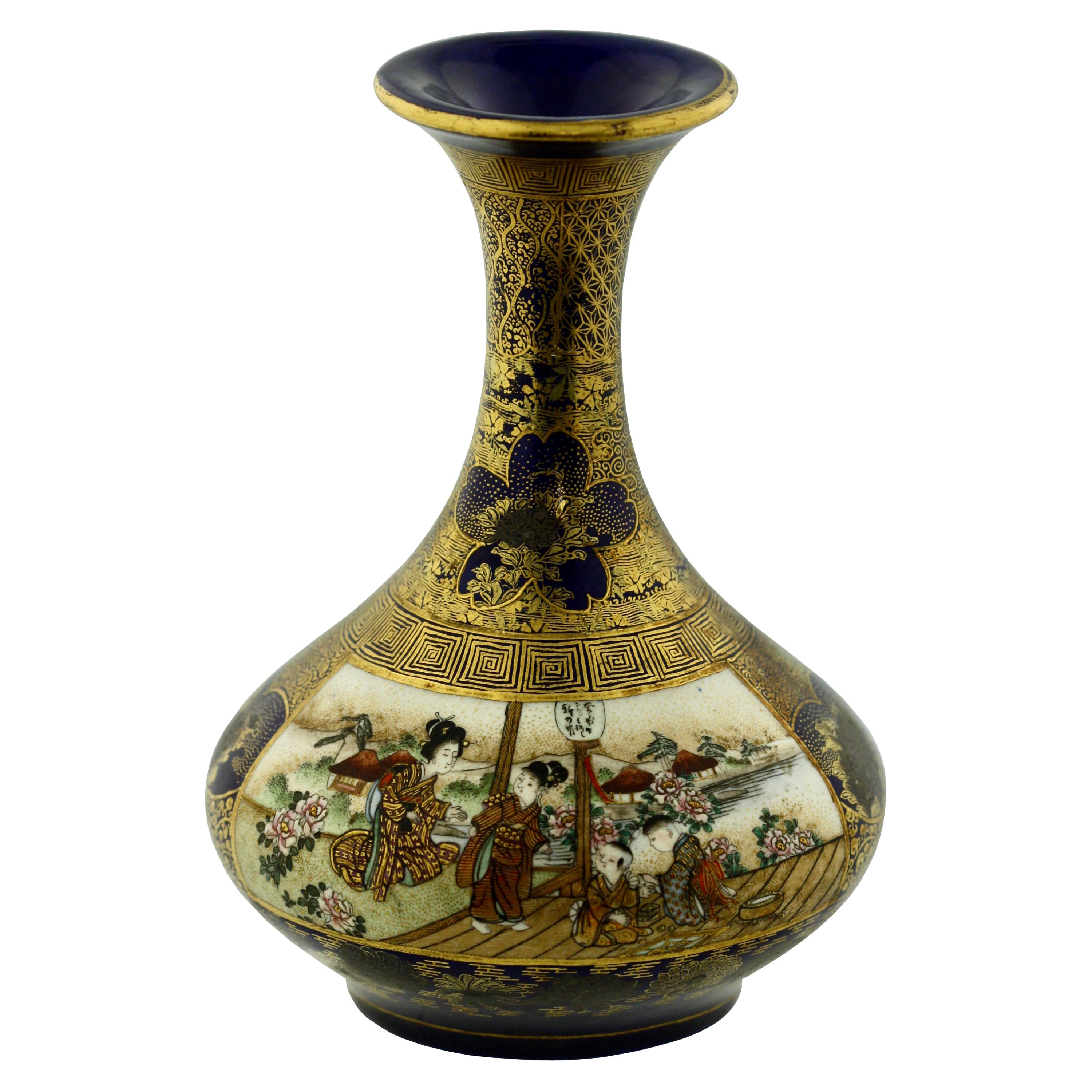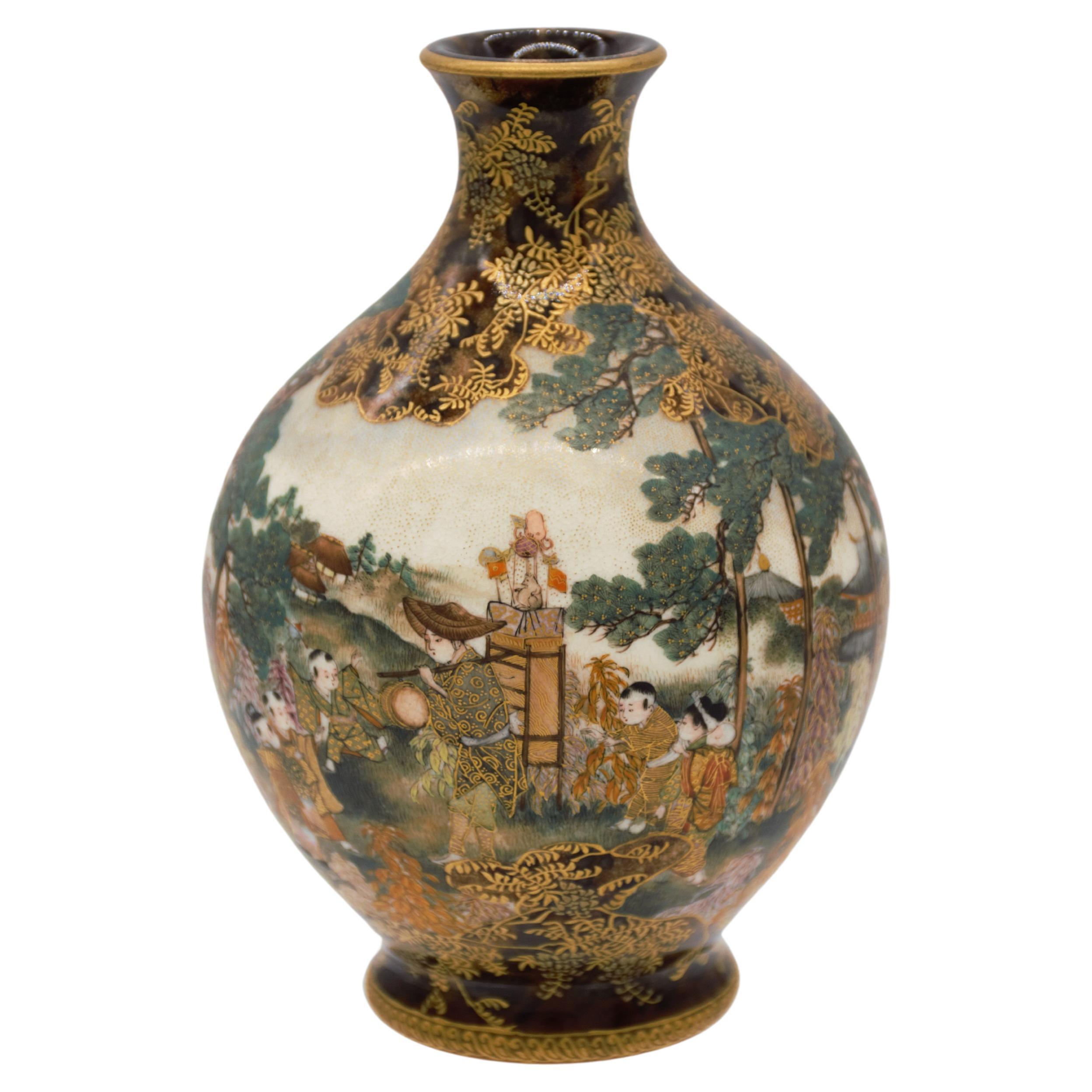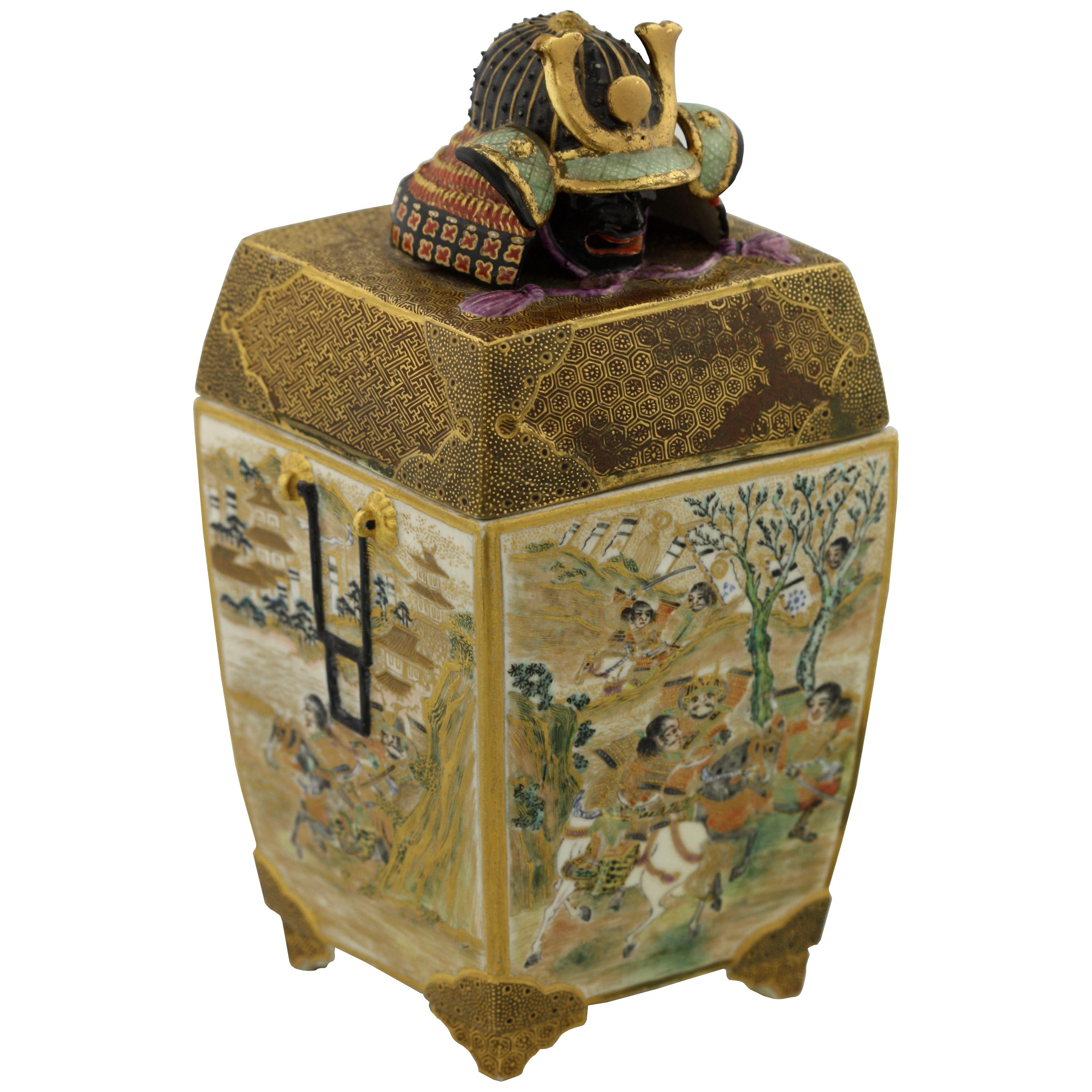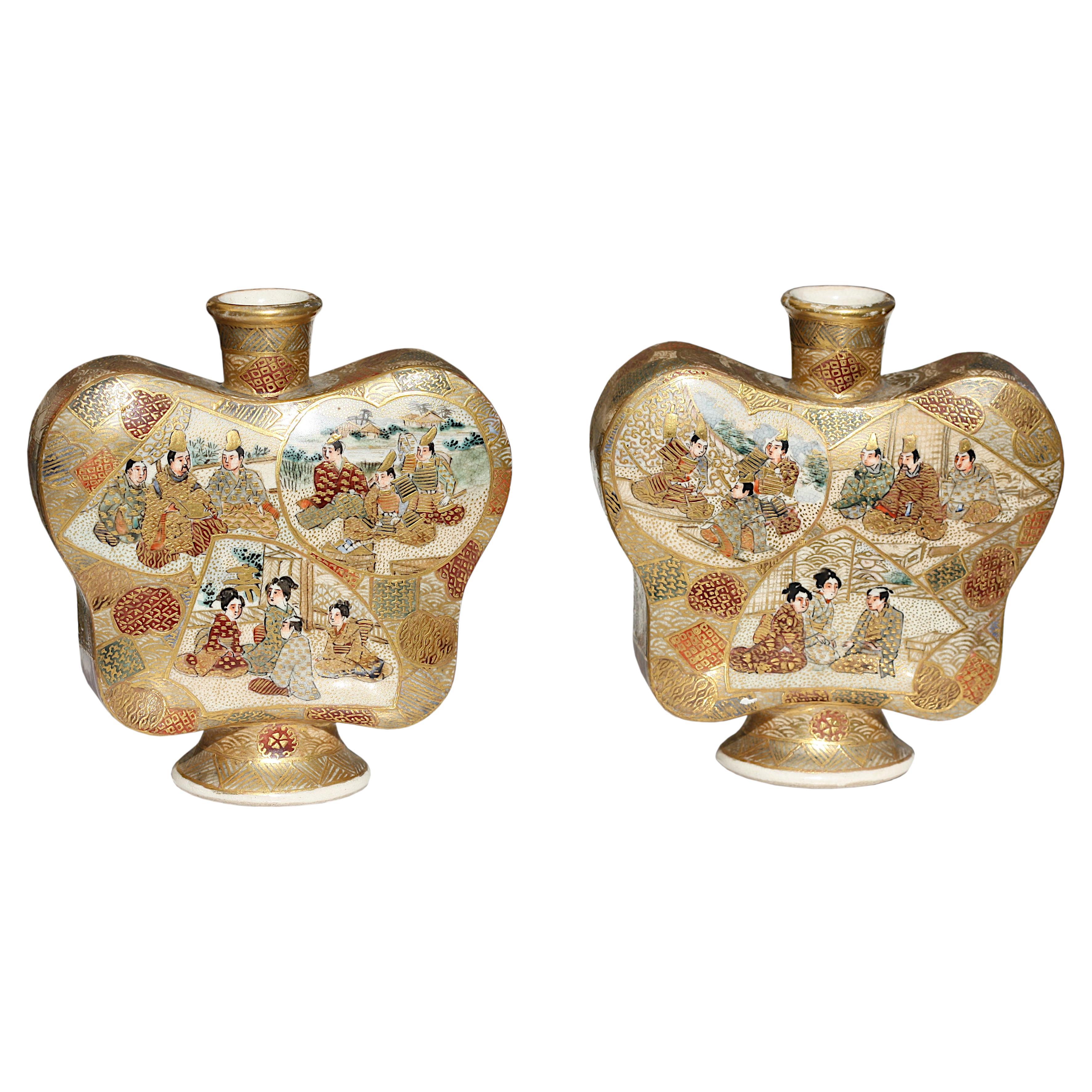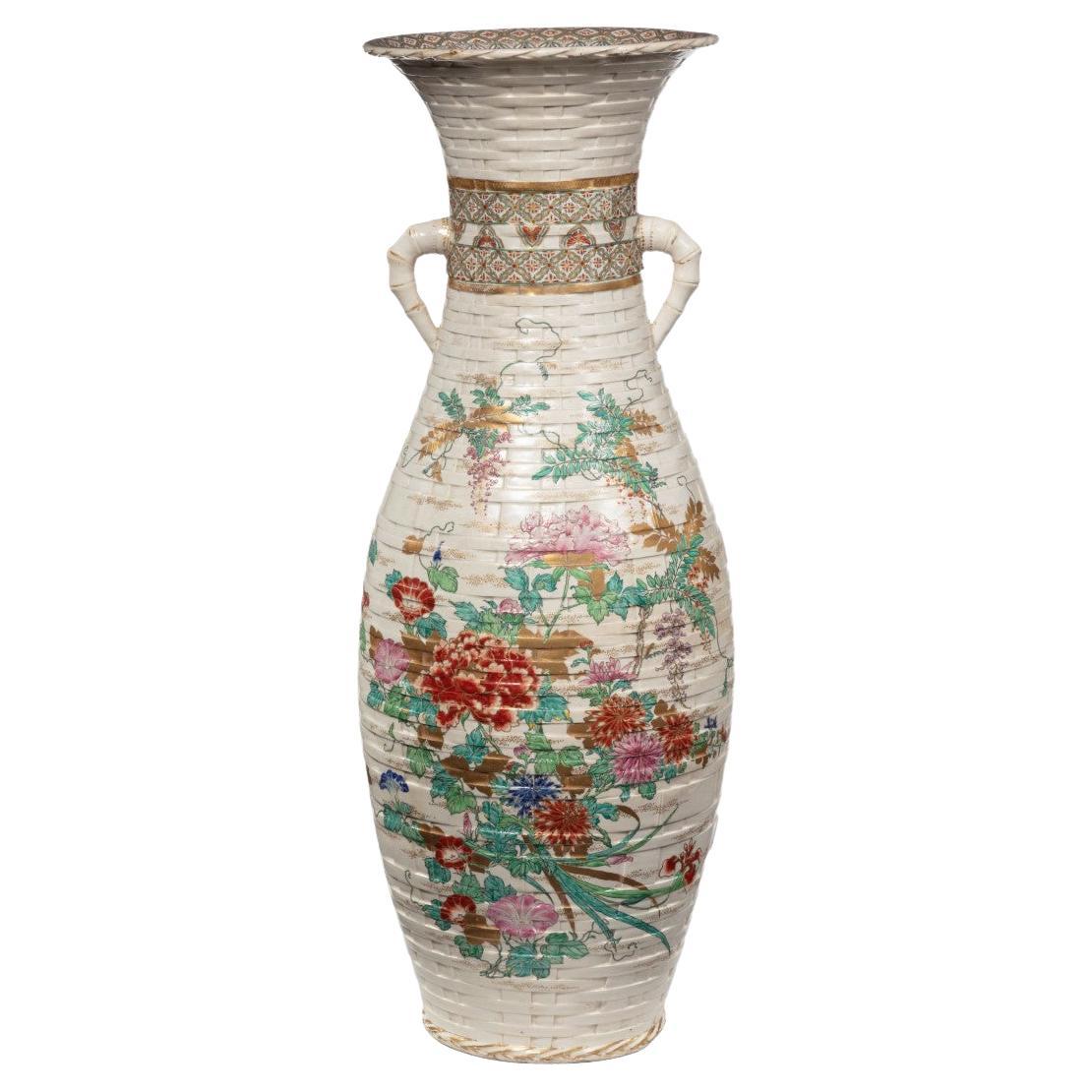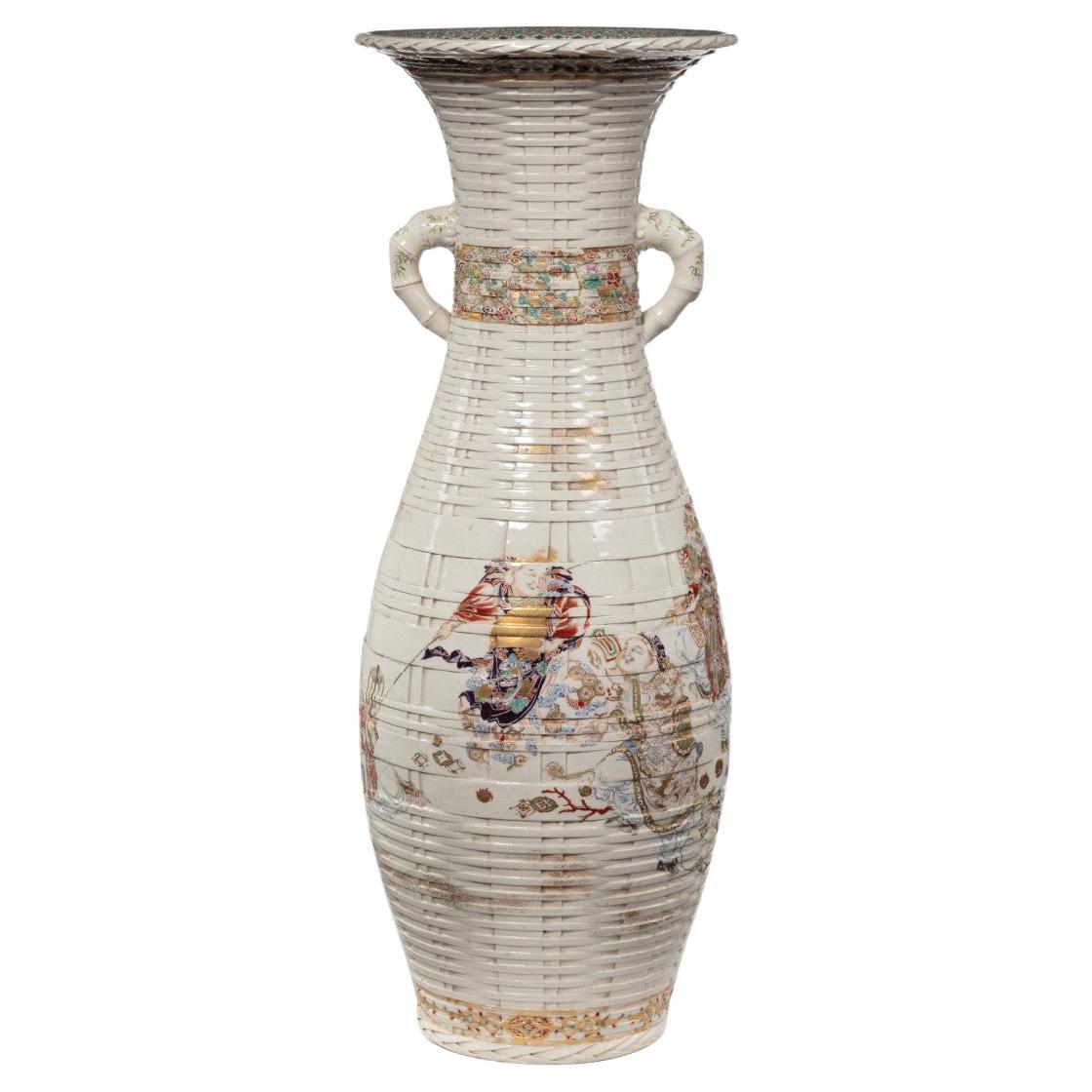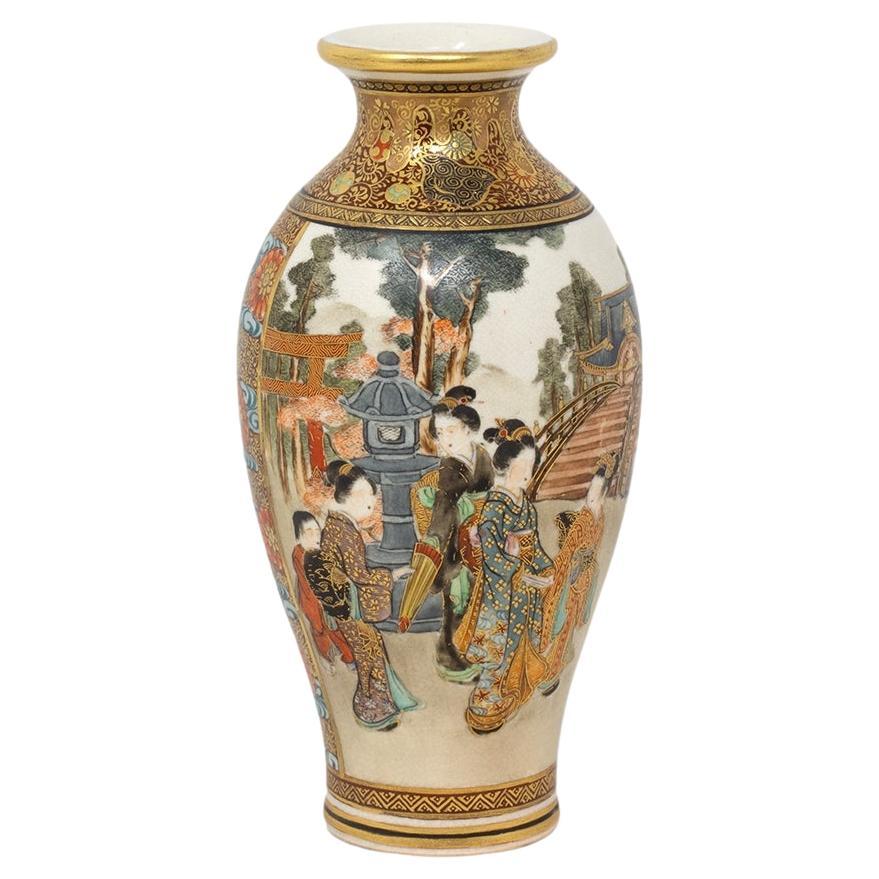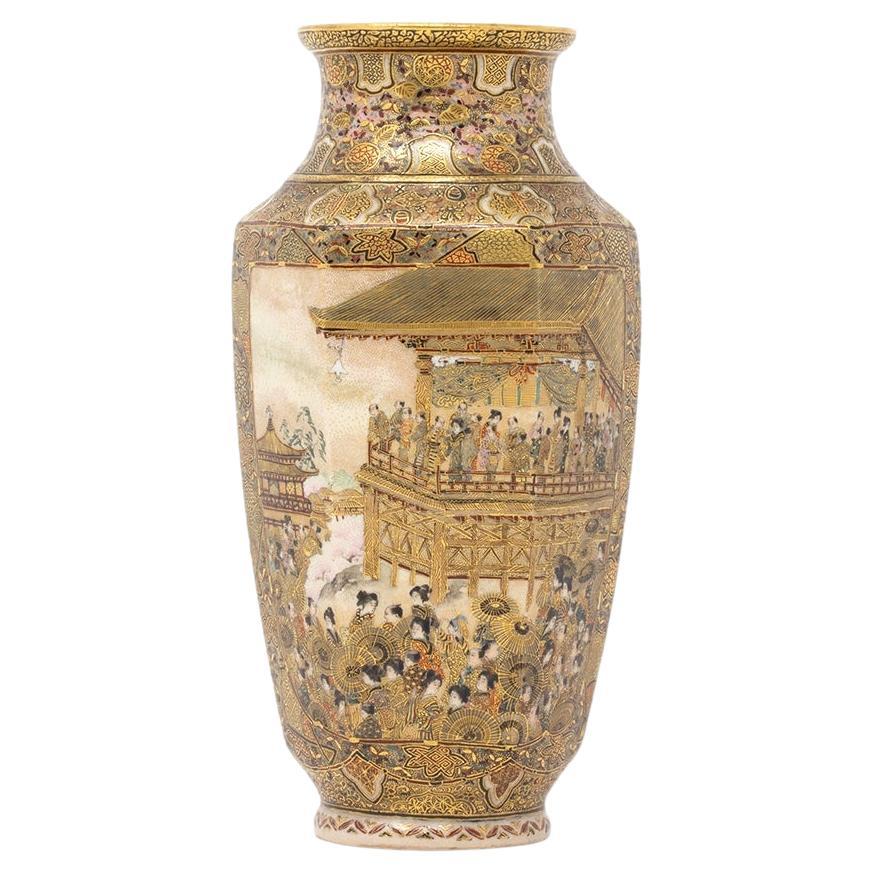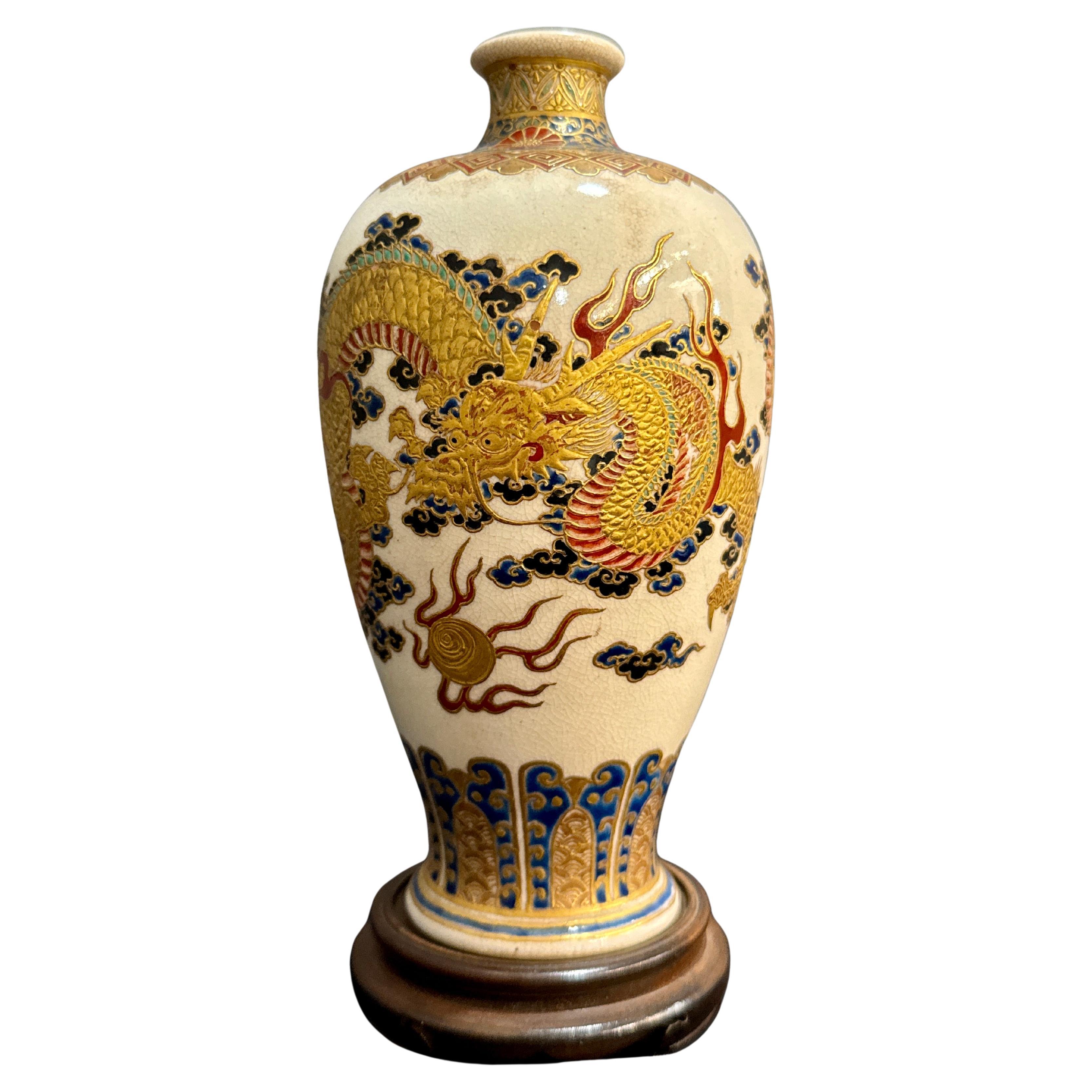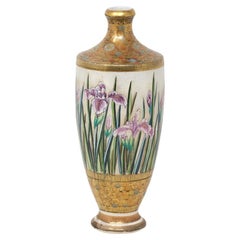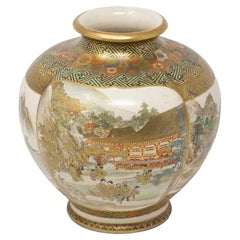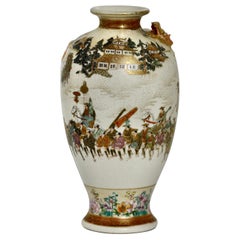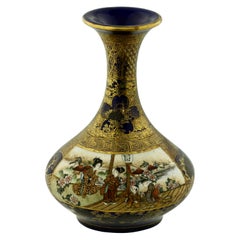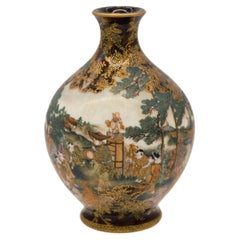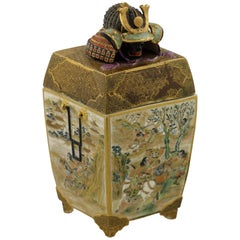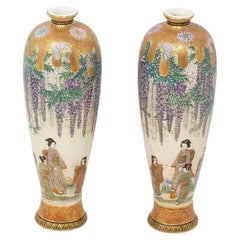
Japanese Meiji Period Pair of Satsuma Earthenware Vases by Kazan
View Similar Items
Want more images or videos?
Request additional images or videos from the seller
1 of 21
Japanese Meiji Period Pair of Satsuma Earthenware Vases by Kazan
About the Item
- Creator:Kazan (Workshop/Studio)
- Dimensions:Height: 5.12 in (13 cm)Width: 7.09 in (18 cm)Depth: 6.3 in (16 cm)
- Style:Meiji (Of the Period)
- Materials and Techniques:
- Place of Origin:
- Period:
- Date of Manufacture:Circa 1890
- Condition:
- Seller Location:Newark, GB
- Reference Number:Seller: PJRD1stDibs: LU6971240496462
About the Seller
5.0
Vetted Professional Seller
Every seller passes strict standards for authenticity and reliability
Established in 2019
1stDibs seller since 2022
31 sales on 1stDibs
Authenticity Guarantee
In the unlikely event there’s an issue with an item’s authenticity, contact us within 1 year for a full refund. DetailsMoney-Back Guarantee
If your item is not as described, is damaged in transit, or does not arrive, contact us within 7 days for a full refund. Details24-Hour Cancellation
You have a 24-hour grace period in which to reconsider your purchase, with no questions asked.Vetted Professional Sellers
Our world-class sellers must adhere to strict standards for service and quality, maintaining the integrity of our listings.Price-Match Guarantee
If you find that a seller listed the same item for a lower price elsewhere, we’ll match it.Trusted Global Delivery
Our best-in-class carrier network provides specialized shipping options worldwide, including custom delivery.More From This Seller
View AllJapanese Earthenware Meiji Period Satsuma Iris Vase by Ryuzan
Located in Newark, England
Meiji Period (1868-1912)
From our Japanese collection, we are delighted to offer this Japanese Satsuma Iris Vase Painted by Ryuzan. The Japanese Satsuma vase of tall tapered form features a circular rolled foot rim, slightly pinched base with a tapered body and slightly bulbous opening. The vase is decorated with a central continuous band of bright iris flowers with various shades of green to the stems and beautiful violet petals. The central band is framed by greek key borders and honeycomb geometric patterns to the top and bottom. The vase is signed to the base Ryuzan 龍山 and dates to the Meiji Period (1868-1912) and the late 19th century circa 1895.
Satsuma ware is a type of earthenware pottery originating from the Satsuma province in Southern Kyushu, Japan’s third largest island.
Meiji Period was an era of Japanese history that spanned from 1868 to 1912. It was the first half of the Empire of Japan, when the Japanese people began to build a paradigm of a modern, industrialised nation state and emergent great power, influenced by Western countries and aesthetics. As a result of radically different ideas, the changes to Japan were profound and it affected the social structure, politics, economy, military, and foreign relations across the board. The period corresponded to the reign of Emperor Meiji and was preceded by the Keio era and was succeeded by the Taisho era.
Cultural Art during the Meiji Period was of particular interest to the government and they overhauled the art export market which in turn promoted Japanese arts via various world’s fairs, beginning in Vienna at the world fair in 1873. The government heavily funded the fairs and took an active role organising how Japan’s culture was presented to the world including creating a semi-public company named Kiritsu Kosho Kaisha (First Industrial Manufacturing Company). The Kiritsu Kosho Kaisha was used to promote and commercialise exports of Japanese art and established the Hakurankai Jimukyoku (Exhibition Bureau) to maintain quality standards. For the 1876 Centennial International Exhibition in Philadelphia, the Japanese government created a Centennial Office and sent a special envoy to secure space for the 30,000 items that would be displayed. The Imperial Household also took an active interest in arts and crafts, commissioning works by select artists to be given as gifts for foreign dignitaries further emphasising the high quality and importance of Japanese art. Just before the end of the 19th century in 1890, the Teishitsu Gigeiin (Artist to the Imperial Household) system was created to recognise distinguished artists. These artists were selected for their exceptionally high quality wares and talent in their own industry. Over a period of 54 years Seventy artists were appointed, amongst these were ceramicist Makuzu Kozan and cloisonné enamel artist...
Category
Antique Late 19th Century Japanese Meiji Ceramics
Materials
Earthenware
Japanese Meiji Period Satsuma Vase by Ryokuzan
Located in Newark, England
From our Japanese Satsuma Collection, we are delighted to offer this Japanese Satsuma Vase by Ryokuzan 緑山. The Satsuma vase of ovoid shape with a tapered body, circular foot rim, wai...
Category
Antique Early 1900s Japanese Meiji Ceramics
Materials
Ceramic, Earthenware, Pottery
Japanese Meiji Period (1868-1912) Satsuma Earthenware Vase Taizan for Hattori
Located in Newark, England
Meiji Period (1868-1912)
From our Japanese collection, we are delighted to offer Japanese Meiji Period Satsuma Vases. The Satsuma Vase of hexagonal form with a slight waisted neck and tight rounded rim is extensively decorated with multiple figures to two large scenes. The first scene features a beach with waves to the background and a plethora of figures including multiple geisha holding traditional Japanese wagasa’s. The second scene follows on from the first with a large building in the foreground holding figures on a large platform under a pagoda roof with a pagoda building in the background and further figures in the foreground. The scenes are framed by a full detailed border with gilt shapes, flowers amongst pink shaded backgrounds and butterflies around the neck. The Satsuma Vase is unusually signed Fine Art, Satsuma Ware, Dai Nippon (Great Japan), Hattori Made, Gosuido Works, Taizan Painted. 美術, サツマヤキ(薩摩焼), 大日本, 服部造, 五スイ堂工, 對山画 and dates to the Meiji Period (1868-1912) and the turn of the 20th century circa 1905.
Satsuma ware is a type of earthenware pottery originating from the Satsuma province in Southern Kyushu, Japan’s third largest island.
Wagasa are traditional Japanese umbrellas made of washi paper attached to a bamboo frame and treated to ensure it is waterproof.
Meiji Period was an era of Japanese history that spanned from 1868 to 1912. It was the first half of the Empire of Japan, when the Japanese people began to build a paradigm of a modern, industrialised nation state and emergent great power, influenced by Western countries and aesthetics. As a result of radically different ideas, the changes to Japan were profound and it affected the social structure, politics, economy, military, and foreign relations across the board. The period corresponded to the reign of Emperor Meiji and was preceded by the Keio era and was succeeded by the Taisho era.
Cultural Art during the Meiji Period was of particular interest to the government and they overhauled the art export market which in turn promoted Japanese arts via various world’s fairs, beginning in Vienna at the world fair in 1873. The government heavily funded the fairs and took an active role organising how Japan’s culture was presented to the world including creating a semi-public company named Kiritsu Kosho Kaisha (First Industrial Manufacturing Company). The Kiritsu Kosho Kaisha was used to promote and commercialise exports of Japanese art and established the Hakurankai Jimukyoku (Exhibition Bureau) to maintain quality standards. For the 1876 Centennial International Exhibition in Philadelphia, the Japanese government created a Centennial Office and sent a special envoy to secure space for the 30,000 items that would be displayed. The Imperial Household also took an active interest in arts and crafts, commissioning works by select artists to be given as gifts for foreign dignitaries further emphasising the high quality and importance of Japanese art. Just before the end of the 19th century in 1890, the Teishitsu Gigeiin (Artist to the Imperial Household) system was created to recognise distinguished artists. These artists were selected for their exceptionally high quality wares and talent in their own industry. Over a period of 54 years Seventy artists were appointed, amongst these were ceramicist Makuzu Kozan and cloisonné enamel artist...
Category
Antique Early 1900s Japanese Meiji Ceramics
Materials
Earthenware, Pottery
Japanese Meiji Period Quatrefoil Satsuma Vase by Choshuzan
By Choshuzan
Located in Newark, England
From our Japanese Satsuma Collection, we are delighted to offer this Japanese Quatrefoil Satsuma Vase by Choshuzan. The Satsuma vase of beautiful quatrefoil globular shape with rolle...
Category
Antique Late 19th Century Japanese Meiji Ceramics
Materials
Ceramic, Earthenware, Pottery
Unusual Pair of Japanese Meiji Period (1868-1912) Satsuma Vases by Kinkozan
By Kinkozan
Located in Newark, England
Taizan Yohei IX Style
From our Japanese collection we are delighted to offer this pair of Japanese Satsuma Vases by Kinkozan. The Satsuma Vases of baluster shape made from earthenwa...
Category
Antique Early 1900s Japanese Meiji Ceramics
Materials
Ceramic, Earthenware, Pottery
Japanese Meiji Period Satsuma Koro
By Kinkozan
Located in Newark, England
Bulbous Form
From our Japanese collection, we are delighted to offer this Japanese Meiji Period Satsuma Koro. The Japanese Satsuma Koro of round...
Category
Antique Early 1900s Japanese Meiji Ceramics
Materials
Ceramic, Earthenware, Pottery
You May Also Like
Japanese Satsuma Earthenware Vase, Meiji Period
Located in West Palm Beach, FL
Japanese Satsuma Earthenware Vase, Meiji Period, 1868-1912, of baluster form, the decorated in poly-chrome enamels and gilt on a clear crackle glaze with a Daimyo procession, the nec...
Category
20th Century Ceramics
Materials
Ceramic
Satsuma Earthenware Vase, by Kinkozan, Japanese, Meiji Period
By Satsuma
Located in West Palm Beach, FL
A Satsuma Earthenware Vase,
by Kinkozan,
Japanese, Meiji period (1868-1912)
decorated in polychrome enamels and gilt over a clear, crackled glaze, delicately painted with ladies and men, the reverse with a flowering garden with sprays of flowers, the neck with geometric and floral designs, a band of kifu heads in silver and gilt above the foot, on a midnight-blue ground, signed Kinkozan zo...
Category
Antique 1860s Vases
Materials
Earthenware
Satsuma earthenware vase by kinkozan, Meiji period
By Kinkozan
Located in Tel Aviv - Jaffa, IL
the body of this small marvelous vase is painted with a scene of a puppet show vendor with his wood backpack, on top of the backpack there are toys and dolls, he is surrounded with a group of 6 children, and on the background you can see a village.
on the other side of the vase there is an amazing painting of flowers and on the sides there are two amazing strong pine trees, the amorphous background is decorated in a "Tortoiseshell" color and design that gives it a real character and which is quite rare to see on satsuma pottery.
all the vase is over richly overpainted over the glaze with gold, which gives it its depth and realism.
signed Kyoto Kinkozan zo, and sealed Kinkozan zo
Kyoto’s Satsuma:
The painting technique used in Kyoto’s Satsuma-style ware is said to be the invention of the sixth generation Kinkōzan Sōbei (1824–1884). The Kinkōzan were a famous family of Kyoto Awataguchi potters who made ceramics that were used at Shōren'in, a temple closely tied to the imperial family, and by the shoguns of the Edo government. In fact the shogun is said to have granted them the name Kinkōzan. With the upheavals at the end of the Edo period, however, and the reforms of the subsequent Meiji government, the potters lost their traditional patrons and had to develop new markets.
Just at that time, the visit of a certain Westerner is said to have decided them to embark on overseas trade. By 1870, they had perfected Kyō Satsuma...
Category
Antique 1890s Japanese Meiji Ceramics
Materials
Gold
Satsuma Earthenware Vase and Cover, Japanese, Meiji Period
By Satsuma
Located in West Palm Beach, FL
A Satsuma Earthenware vase and cover,
Japanese, Meiji period, (1868-1912)
decorated in polychrome enamels and gilt over a clear, crackled glaze, delicately painted with samurai on ...
Category
Antique 1890s Antiquities
Materials
Ceramic
A pair of "butterfly" Satsuma earthenware vases, Meiji period
Located in West Palm Beach, FL
A pair of "butterfly" Satsuma earthenware vases, Meiji period
finely decorated in enamels and gilt with scenes of Samurai and retainers and high ranking female members of the househ...
Category
Antique 19th Century Ceramics
Materials
Ceramic
Large Meiji Period Satsuma Earthenware Floor Vase
Located in Lymington, Hampshire
A large Meiji period Satsuma earthenware floor vase, the of baluster form, painted in pastel overglaze enamels and gilding with two large sprays of flowers including prunus blossom, ...
Category
Antique 1870s Japanese Meiji Ceramics
Materials
Enamel
Recently Viewed
View AllMore Ways To Browse
Cloisonne Namikawa
Antique Arts And Crafts Bureau
Imperial Bed
Iris Pottery
Emperor Bed
Kyoto Vase Satsuma
Cloisonne With Iris
Iris Cloisonne Vase
Bed Of Ware
Satsuma Wisteria
Straits Chinese Porcelain
Tamba Ware
Tongzhi Porcelain
Chinese Export Immortals Porcelain
Chinese Rose Garden Seat
Enamelware Art
Famille Rose Charger
Large Asian Floor Vases
